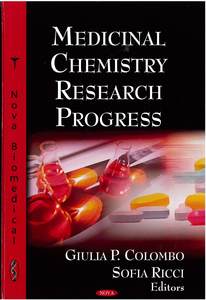Alzheimer's disease, the importance of Aβ and the hopes for chemo preventatives
Antony, Helma, and Macreadie, Ian (2009) Alzheimer's disease, the importance of Aβ and the hopes for chemo preventatives. In: Colombo, Giulia P., and Ricci, Sofia, (eds.) Medicinal Chemistry Research Progress. Nova Science Publishers, New York, US, pp. 7-65.
![[img]](https://researchonline.jcu.edu.au/22331/1.hassmallThumbnailVersion/22331_Antony_%26_Macreadie_2009_Book_cover_.jpg)
|
Image (JPEG) (Book Cover)
- Cover Image
Download (301kB) |
|
|
PDF (Published Version)
- Published Version
Restricted to Repository staff only |
Abstract
A century after its discovery, Alzheimer's disease (AD) remains the most significant disease burden of ageing societies. Knowledge of the precise causes of AD is fundamental to rational preventative approaches and treatment. However, our current understanding is incomplete due to uncertainties in experimental models and the multifaceted nature of amyloid β, considered to be the causative agent associated with AD. These difficulties have not prevented experimental models, including rabbits, mice, worms, yeast and in vitro models, being used to explore AD preventatives and therapeutics. The difficulties have also led to a plethora of hypotheses on the cause of AD and a range of assays to measure outcomes in different treatments. For example, in the animal models some of the measured outcomes relate to cognition, plaque load or brain metals. Nevertheless, the most important outcome is what the chemo preventatives and treatments do for AD. Currently there is no cure for AD. Drugs such as the anticholine esterase inhibitors (e.g. Aricept, Namenda, Exelon, etc.) are usually prescribed for AD sufferers, but there is debate over their cost-effectiveness. The most exciting advance for prevention of AD has been simvastatin, a drug prescribed for hypercholesterolemia. Simvastatin is the second biggest selling drug after atorvastatin, another cholesterol-lowering drug which has little impact on AD. The advantage of simvastatin appears to be its lipophilic nature which allows it to cross the blood brain barrier. Other chemo preventatives in clinical trials target specific disease mechanisms and include metal chelators, antibodies, antioxidants, etc. This review will discuss the progress of AD drug research and outline various strategies and models used for testing them.
| Item ID: | 22331 |
|---|---|
| Item Type: | Book Chapter (Research - B1) |
| ISBN: | 978-1-60456-580-5 |
| Date Deposited: | 12 Dec 2012 04:34 |
| FoR Codes: | 11 MEDICAL AND HEALTH SCIENCES > 1109 Neurosciences > 110904 Neurology and Neuromuscular Diseases @ 35% 11 MEDICAL AND HEALTH SCIENCES > 1115 Pharmacology and Pharmaceutical Sciences > 111502 Clinical Pharmacology and Therapeutics @ 30% 06 BIOLOGICAL SCIENCES > 0601 Biochemistry and Cell Biology > 060108 Protein Trafficking @ 35% |
| SEO Codes: | 92 HEALTH > 9201 Clinical Health (Organs, Diseases and Abnormal Conditions) > 920112 Neurodegenerative Disorders Related to Ageing @ 100% |
| Downloads: |
Total: 879 Last 12 Months: 19 |
| More Statistics |



